|
Books Should Be Free Loyal Books Free Public Domain Audiobooks & eBook Downloads |
|
|
Books Should Be Free Loyal Books Free Public Domain Audiobooks & eBook Downloads |
|
Top Authors |
|---|
|
Book type:
Sort by:
|
By: Jean Webster (1876-1916) | |
|---|---|
 Jerry
Jerry
Jerry is the humorous story of a young man's attempt to win his lady. Jerry is waiting for his friends at a hotel in Italy, and is bored and lonely. When he hears that a beautiful American lady, Constance Wilder, is staying nearby, he tries to visit her. After an awkward first meeting, he tries to catch her attention by pretending to be a peasant tour guide. She recognizes him for what he is, but pretends not to, and a lively charade is carried on as they tease and fall in love. A clean, sweet, funny historical fiction/romance. | |
 Jerry Junior
Jerry Junior
| |
By: Ralph Waldo Emerson (1803-1882) | |
|---|---|
 Essays, First Series
Essays, First Series
“I do not wish to treat friendships daintily but with roughest courage. When they are real, they are not glass beads or frost-work but the solidest thing we know....” is how Ralph Waldo Emerson saw the ties of friendship in one of his essays titled Friendship, more than a hundred years ago. This and other interesting essays are included in Essays First Series by Ralph Waldo Emerson, the distinguished American philosopher and writer. Apart from writing, he was also a very gifted and popular public speaker who toured the length and breadth of the country sharing his ideas with the larger public... | |
 Nature
Nature
“Nature” is a short essay by Ralph Waldo Emerson published anonymously in 1836. It is in this essay that the foundation of transcendentalism is put forth, a belief system that espouses a non-traditional appreciation of nature. Recent advances in zoology, botany, and geology confirmed Emerson’s intuitions about the intricate relationships of nature at large. The publication of “Nature” is usually taken to be the watershed moment at which transcendentalism became a major cultural movement... | |
 Essays, Second Series
Essays, Second Series
Ralph Waldo Emerson (1803 – 1882) was an American essayist, philosopher, and poet, best remembered for leading the Transcendentalist movement of the mid 19th century. His teachings directly influenced the growing New Thought movement of the mid-1800s. | |
 Representative Men
Representative Men
A series of biographical lectures originally published in 1850. Each chapter is a philosophical treatment of the life of an intellectual. The six representatives are Plato, Swedenborg, Shakespeare, Montaigne, Napolean and Goethe. (Introduction by S. Kovalchik) | |
 Essays by Ralph Waldo Emerson
Essays by Ralph Waldo Emerson
| |
 Poems Household Edition
Poems Household Edition
| |
 May-Day and Other Pieces
May-Day and Other Pieces
| |
By: Sigmund Freud (1856-1939) | |
|---|---|
 Dream Psychology
Dream Psychology
From the dawn of human consciousness, dreams have always fascinated us. Do they mean something? Do dreams help us see into the future? These questions have intrigued us for centuries. Sigmund Freud was one of the first people to examine dreams seriously and interpret them in the context of our waking lives. In Dream Psychology: Psychoanalysis for Beginners, the Austrian psychoanalyst, Dr Sigmund Freud shares his exciting early discoveries that there was indeed a connection between his patients' dreams and their mental disturbances... | |
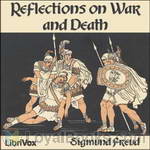 Reflections on War and Death
Reflections on War and Death
Anyone, as Freud tells us in Reflections on War and Death, forced to react against his own impulses may be described as a hypocrite, whether he is conscious of it or not. One might even venture to assert—it is still Freud’s argument—that our contemporary civilisation favours this sort of hypocrisy and that there are more civilised hypocrites than truly cultured persons, and it is even a question whether a certain amount of hypocrisy is not indispensable to maintain civilisation. When this... | |
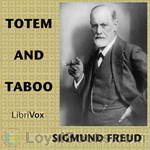 Totem and Taboo
Totem and Taboo
Totem and Taboo: Resemblances Between the Mental Lives of Savages and Neurotics is a book by Sigmund Freud, published in German in 1913. It is a collection of four essays first published in the journal Imago (1912–13), employing the application of psychoanalysis to the fields of archaeology, anthropology, and the study of religion. The four essays are entitled: The Horror of Incest; Taboo and Emotional Ambivalence; Animism, Magic and the Omnipotence of Thoughts; and The Return of Totemism in Childhood. | |
 Leonardo da Vinci A Psychosexual Study of an Infantile Reminiscence
Leonardo da Vinci A Psychosexual Study of an Infantile Reminiscence
| |
 Group Psychology and The Analysis of The Ego
Group Psychology and The Analysis of The Ego
| |
By: Saint Ambrose (337/340-397) | |
|---|---|
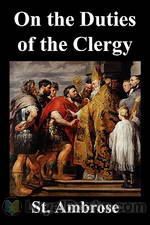 On the Duties of the Clergy
On the Duties of the Clergy
Aurelius Ambrosius was a fourth century cleric who rose to become the Archbishop of Milan in 374 AD. His father was a powerful Roman general and the prefect of Gaul. His brother and sister were also consecrated as saints by the Catholic Church. As an infant, a swarm of bees settled over his face and flew away without harming the baby, but left behind a drop of honey and this was seen as a sign of his future eloquence and bees are often painted in his portraits as his symbols. Ambrosius (or Ambrose as he is referred to in English) was a highly learned man, well versed in Latin and Greek, theology and many other subjects... | |
 Concerning Virgins
Concerning Virgins
Concerning Virgins (De Virginibus) is a series of letters, compiled into three “books,” St. Ambrose wrote to his sister, Manellia, These, perhaps Ambrose’s earliest writings, were written in 377 CE. Written in a rather light-handed non-technical style they appear as ethical guides to women who are contemplating entering nunneries. More importantly, they set the tone for Ambrose’s later writing on ethics. Concerning Virgins was referred to by other patristic writers including St. Jerome, St Augustine and Cassian, and are now included in the extra-biblical cannon of the early church fathers. | |
By: Maurice Leblanc (1864-1941) | |
|---|---|
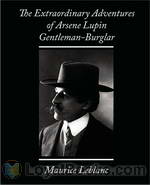 The Extraordinary Adventures of Arsène Lupin, Gentleman-Burglar
The Extraordinary Adventures of Arsène Lupin, Gentleman-Burglar
Two writers, famous in their own countries for creating immortal characters: Sir Arthur Conan Doyle in England and Maurice Leblanc in France. Their literary creations, Sherlock Holmes and Arsene Lupin are at two ends of the criminal spectrum. Holmes is a sleuth while Lupin is a burglar. When Maurice Leblanc introduces Sherlock Holmes in one of his Arsene Lupin stories, Conan Doyle is outraged. He sues Leblanc, who promptly changes the character's name to “Herlock Sholmes” and continues featuring... | |
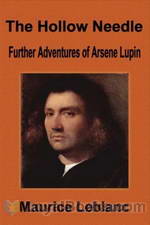 The Hollow Needle: Further Adventures of Arsène Lupin
The Hollow Needle: Further Adventures of Arsène Lupin
Arsène Lupin returns in a wonderful story of disguises, love, and of course treasure. Once again, Lupin crosses paths with the famous Holmlock Shears. But this time Arsène matches wits with Isidore Beautrelet, Sixth-form Schoolboy. Every step that Lupin takes has Beautrelet right on his heels. Has Lupin finally met his match? Will Beautrelet discover the secret of the Hollow Needle? And has the gentleman burglar met another match as well, one who will lead him away from his life of crime forever? | |
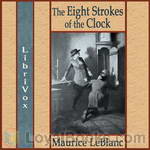 The Eight Strokes of the Clock
The Eight Strokes of the Clock
The Eight Strokes of the Clock is a collection of eight short stories by Maurice Leblanc. The stories have his most famous creation, Arsène Lupin, gentleman-thief, as main character. The eight stories, even though independent, have a leading thread: Lupin, under the name of Serge Rénine, trying to conquer the heart of a young lady, travels with her, solving eight mysteries on the way. | |
 The Blonde Lady
The Blonde Lady
In “The Blonde Lady, being a record of the duel of wits between Arsène Lupin and the English detective” – original title “Arsène Lupin contre Herlock Sholmes” – the gentleman-burglar once more meets his enemy, the English detective Herlock Sholmes. If in the last story of “Arsène Lupin, gentleman-burglar” Sherlock Holmes arrives too late (the name was at a later date changed to Herlock Sholmes in reply to complaints and threats by Conan Doyle regarding copyrights), in the two stories that compose “The Blonde Lady” these two great intellects are bound in opposite directions... | |
 The Teeth of the Tiger
The Teeth of the Tiger
Maurice Leblanc delivers another Arsene Lupin adventure set in World War I. | |
 The Confessions of Arsene Lupin
The Confessions of Arsene Lupin
A collection of nine stories - or confessions - of the celebrated gentleman thief Arsene Lupin | |
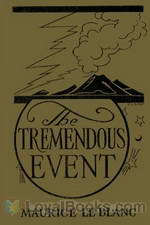 The Tremendous Event
The Tremendous Event
| |
 The Golden Triangle The Return of Arsène Lupin
The Golden Triangle The Return of Arsène Lupin
| |
 The Three Eyes
The Three Eyes
| |
 The Secret of Sarek
The Secret of Sarek
| |
 The Frontier
The Frontier
| |
By: Albert Einstein (1879-1955) | |
|---|---|
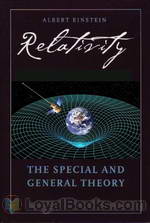 Relativity: The Special and General Theory
Relativity: The Special and General Theory
Einstein wrote this book for people who are interested in understanding the Theory of Relativity but aren't experts in scientific and mathematical principles. I'm sure many people have heard about Einstein's Theory of Relativity, but most of them don't really know what it is all about. This book gives them a chance to know more about this very famous theory without the need to take a Physics course first. This book is divided into three parts. The first part explains what special relativity is all about... | |
 Sidelights on Relativity
Sidelights on Relativity
Sidelights on Relativity contains ETHER AND THE THEORY OF RELATIVITY, an address delivered on May 5th, 1920, in the University of Leyden; and GEOMETRY AND EXPERIENCE, an expanded form of an address to the Prussian Academy of Sciences in Berlin on January 27th, 1921. (Intro from Project Gutenberg) | |
 The Meaning of Relativity Four lectures delivered at Princeton University, May, 1921
The Meaning of Relativity Four lectures delivered at Princeton University, May, 1921
| |
 Relativity: The Special and the General Theory A Popular Exposition, 3rd ed.
Relativity: The Special and the General Theory A Popular Exposition, 3rd ed.
| |
By: Founding Fathers of the United States | |
|---|---|
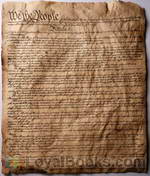 The Constitution of the United States of America, 1787
The Constitution of the United States of America, 1787
The Declaration of Independence was signed on July 4, 1776. It announced that the thirteen American colonies, who were at war with Great Britain in the American Revolutionary War, no longer considered themselves part of the British Empire. They now called themselves a new nation, The United States of America. This famous document went on to become a well-known keystone of the human rights movement. However, the newly formed state had no real identity or philosophy and were merely a loose collection of states that had freed themselves from colonial rule... | |